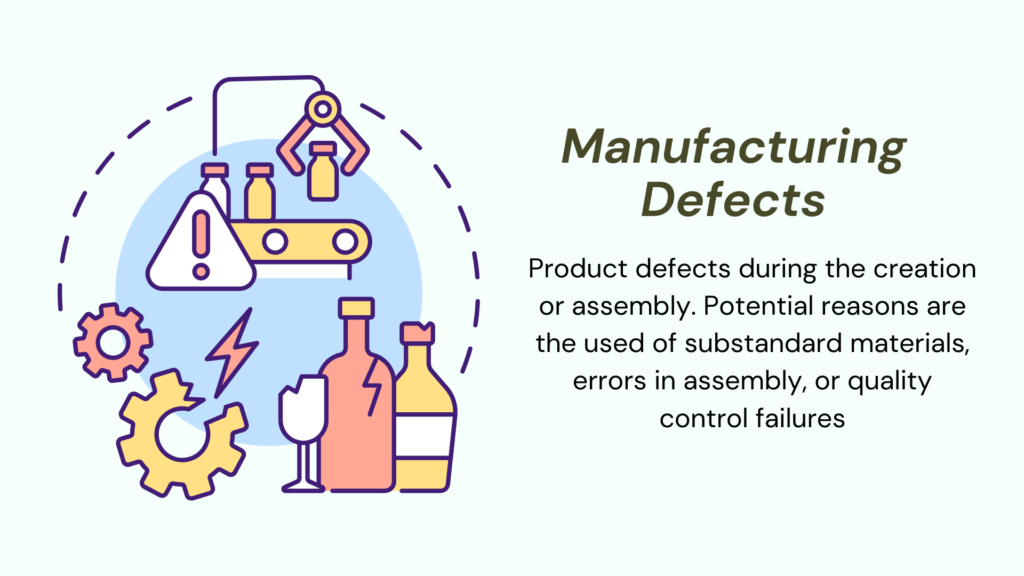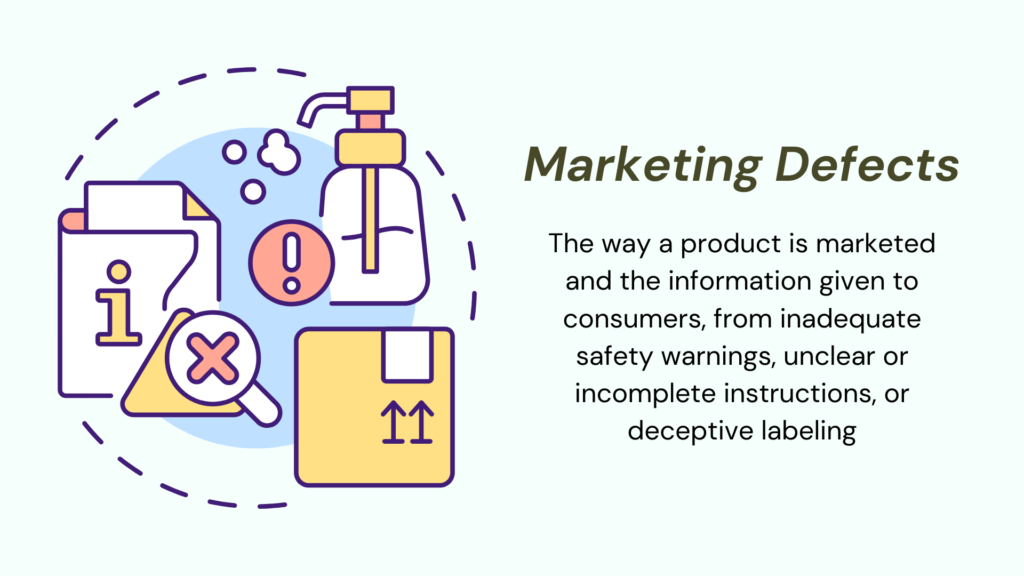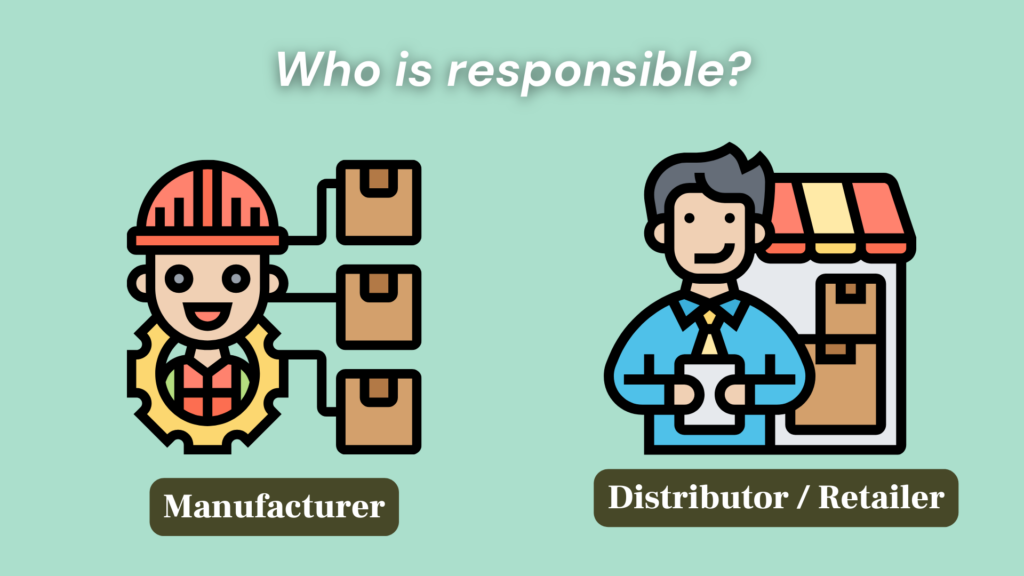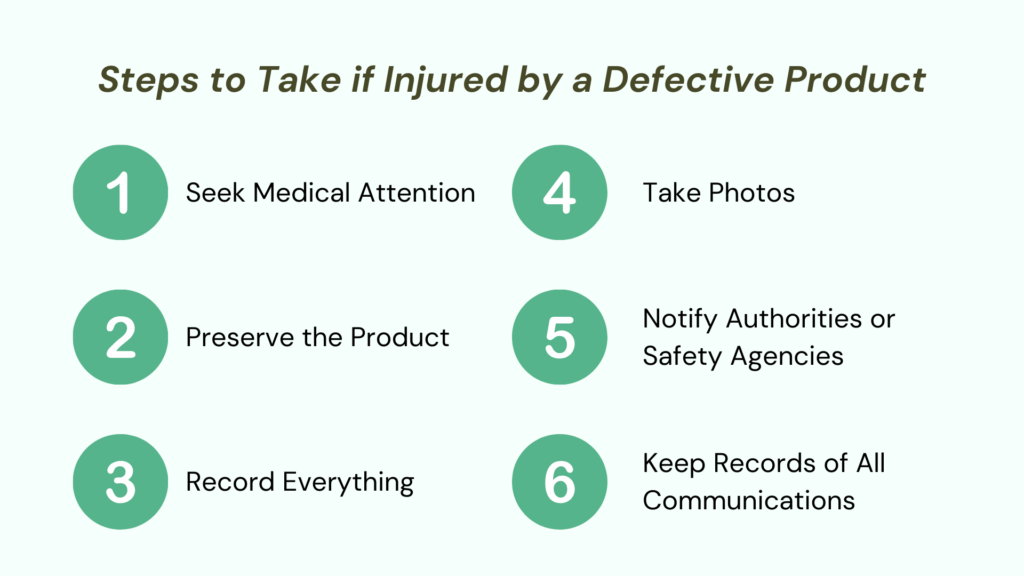Posted in News on December 20, 2023
The holiday season is a time of joy and gift-giving, but it’s important to be aware of the risks that come with holiday products. Every year, we see incidents of injuries caused by defective or unsafe gifts. These range from toys for kids to electronics and holiday decorations.
In this final part of our “Season of Mishaps” series, we’re focusing on product-related injuries. We’ve already covered topics like winter driving, decoration safety, fires and burns, and now it’s time to talk about staying safe with the products we buy and receive during the holidays.
Our goal is to keep it simple and helpful. We want you to know how to spot unsafe products and understand your rights if you or a loved one is injured by a defective product. Let’s dive into the world of product safety, making sure your holidays are both happy and safe.
Understanding Product Liability
Product liability law is a legal framework that holds manufacturers, distributors, and retailers accountable for injuries caused by defective or unsafe products. It’s a crucial part of consumer law that ensures products meet safety standards and don’t pose a risk to users.
This law covers a range of products, from everyday household items to complex electronics. If a product causes harm due to a defect, poor design, or inadequate instructions, the law can step in to protect the consumer.
The Role in Consumer Safety
Product liability law serves as a safety net, ensuring that consumers are protected from harm caused by defective products. It incentivizes companies to rigorously test their products and maintain high safety standards.
By holding companies accountable, this law encourages better quality control and responsible business practices. It’s not just about assigning blame; it’s about preventing future incidents and ensuring overall consumer safety.
Understanding product liability law helps you, as a consumer, recognize your rights and the responsibilities of companies. It’s a key part of staying safe and informed, especially during the holiday shopping season.
Types of Defective Products
Design Defects: Fundamentally Flawed Products
Design defects are inherent flaws in a product’s blueprint. These defects make the product unsafe by design, regardless of how well it is manufactured. For example, a children’s toy designed with small, detachable parts can pose a choking hazard, or an electronic gadget designed without proper overheating safeguards could be a fire hazard.
Consumers should be aware of how a product’s design might impact its safety. This involves considering the product’s intended use and potential misuses, especially for products used by vulnerable groups like children.
Manufacturing Defects: When Production Goes Wrong
Manufacturing defects arise during the creation or assembly of the product. These defects can result from a range of issues, such as using substandard materials, errors in assembly, or quality control failures. An example might be a batch of kitchen blenders with a faulty blade assembly that poses a risk of injury.
Consumers should look for signs of poor craftsmanship or materials that seem inferior. Such defects might not be apparent in every item of the product line but can significantly impact safety.
Marketing Defects: The Dangers of Misinformation
Marketing defects relate to how a product is sold and the information provided to consumers. This includes insufficient safety warnings, unclear or incomplete instructions, or misleading labels. A potent chemical cleaner sold without adequate hazard warnings or a complex tool with insufficient operating instructions are examples of marketing defects.
Consumers should read labels, warnings, and instructions carefully and be cautious if this information is missing, unclear, or seems inadequate. This vigilance is crucial for products that require specific safety precautions during use.
Understanding these types of product defects helps consumers make informed decisions and recognize potential risks associated with various products. It’s especially crucial during the holiday season when a wide range of products are bought and gifted, increasing the likelihood of encountering defective items.
Who is responsible?
Manufacturer Accountability
The responsibility often starts with the manufacturer. They are expected to design and produce items that are safe for intended use. This includes conducting thorough safety tests and ensuring quality control. If a product is found to have design or manufacturing defects, the manufacturer is typically the primary liable party.
Distributor and Retailer Responsibilities
Beyond manufacturing, distributors and retailers play crucial roles. Distributors must ensure they are supplying safe, non-defective products. Retailers, especially those who label or brand products as their own, are expected to sell items that meet safety standards. If they knowingly sell a defective product, they could be held liable.
Understanding the Legal Principles
In product liability law, understanding key legal concepts like negligence, strict liability, and comparative fault is crucial. These principles determine who is responsible when a product causes harm. Let’s examine each principle closely.
Negligence in Product Cases
Negligence occurs when these parties fail to meet their duty of care in ensuring product safety. This could involve inadequate safety testing, ignoring known defects, failing to provide proper safety warnings, or ignoring customer complaints about a product’s safety.
Strict Liability for Defects
Strict liability applies to product liability cases, meaning a party can be held liable for a defective product even if they weren’t negligent. If the product is defective and causes injury, the responsible party can be held liable regardless of their care or intent.
Comparative Fault
Some cases involve a shared liability, where both the manufacturer and the consumer might have contributed to the injury. For example, if a consumer uses a product in a way not intended or ignores safety warnings, this could reduce the liability of the producer or seller.
Understanding who is responsible and these legal concepts is crucial, especially during the holidays when we buy and use more products than usual. It helps to know your rights if something goes wrong with a product.
Steps to Take if Injured by a Defective Product
- Seek Medical Attention
Your health comes first. If you’re injured by a defective product, seek medical attention immediately. This not only ensures your well-being but also provides a medical record of the injury.
- Preserve the Product
Keep the defective product as it is. Don’t try to fix it or throw it away. This product is key evidence in any claim you might make later.
- Record Everything
Take detailed notes about the incident. Include the date, time, how the injury occurred, and any other relevant details.
- Take Photos
Photographs can be powerful evidence. Take pictures of the defective product, your injuries, and where the incident occurred.
- Notify Authorities or Safety Agencies
Report the incident to consumer safety agencies or relevant authorities. This could be a government consumer protection agency or the product’s manufacturer.
- Keep Records of All Communications
If you report the incident or communicate with the manufacturer or seller, keep records of all your interactions. This includes emails, letters, and notes from phone calls.
Taking these steps can be crucial in building a strong case if you decide to pursue legal action for your injury caused by a defective product. It also helps to alert others, including authorities, about potentially dangerous products.
Seeking Legal Recourse for Defective Product Injuries
If you’ve sustained an injury from a defective product, it’s wise to consult a personal injury attorney, especially if the injury is severe or has long-term effects. An attorney can help you understand your rights and whether you have a valid claim.
Personal injury attorneys are experienced in navigating product liability laws and can offer expert advice on how to proceed with your case.
Navigating the Product Liability Claim Process
- Initiating a Claim: Your attorney will start by assessing your case, which includes reviewing your evidence and medical records.
- Determining the Claim: They will help identify the type of defect (design, manufacturing, or marketing) and establish the liable party (manufacturer, distributor, or retailer).
- Filing the Claim: The attorney will handle the filing process, ensuring that all legal requirements are met and the claim is filed within the applicable statute of limitations.
Possible Outcomes
- Settlements: Many product liability cases are resolved through settlements where the responsible party offers compensation without going to trial.
- Going to Court: If a settlement isn’t reached, the case may go to trial, where a judge or jury will decide the outcome.
Types of Compensation
Compensation can cover medical expenses, lost wages, pain and suffering, and in some cases, punitive damages, which are meant to punish the negligent party for their actions.
Each case is unique, and the types of compensation will depend on the specific circumstances and severity of your injury. A personal injury attorney can help you understand what types of compensation may be applicable in your situation.
Understanding when and how to seek legal recourse is crucial if you’ve been injured by a defective product. A personal injury attorney can provide the necessary guidance and support through this complex process, helping you to achieve a fair outcome.
Navigating the Complexities of Product Liability with Heenan & Cook
The holiday season should be a time of joy and celebration, not stress and injury. By being informed about the potential risks and knowing the right steps to take, you can better protect yourself and your loved ones.
Injuries from defective products can have lasting impacts, not just physically but also emotionally and financially. It’s essential to know that you don’t have to navigate these challenges alone. Legal expertise can provide the guidance and support needed to seek justice and compensation.
If you or someone you know has been affected by a defective product, Heenan & Cook is here to help. Our expertise in personal injury law, specifically in handling product liability cases, ensures that you receive knowledgeable and compassionate legal assistance. We understand the complexities of these cases and are committed to helping you achieve the best possible outcome.
Contact Heenan & Cook for a consultation, and let our expertise guide you through your product liability claim, ensuring your rights are protected and your voice is heard.









